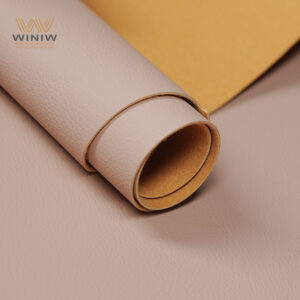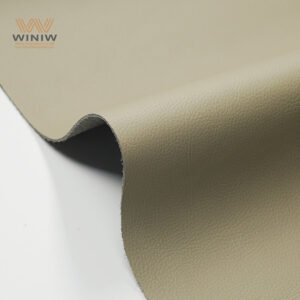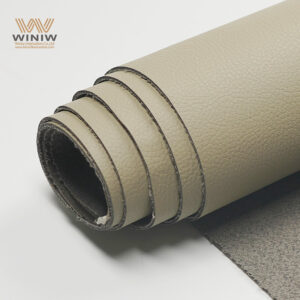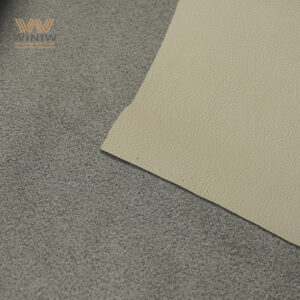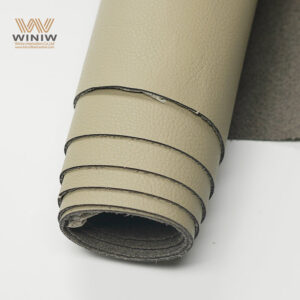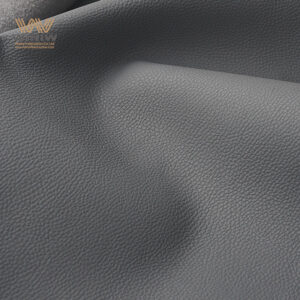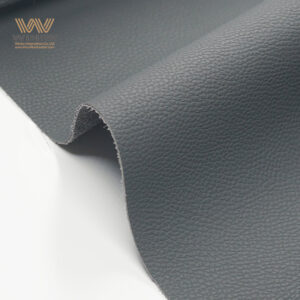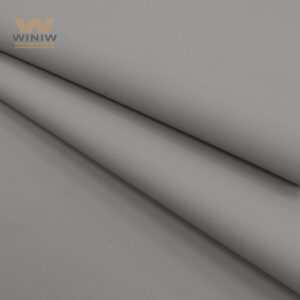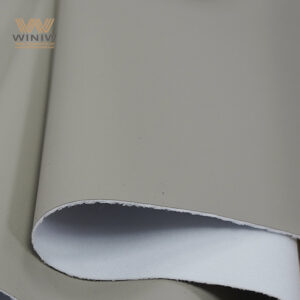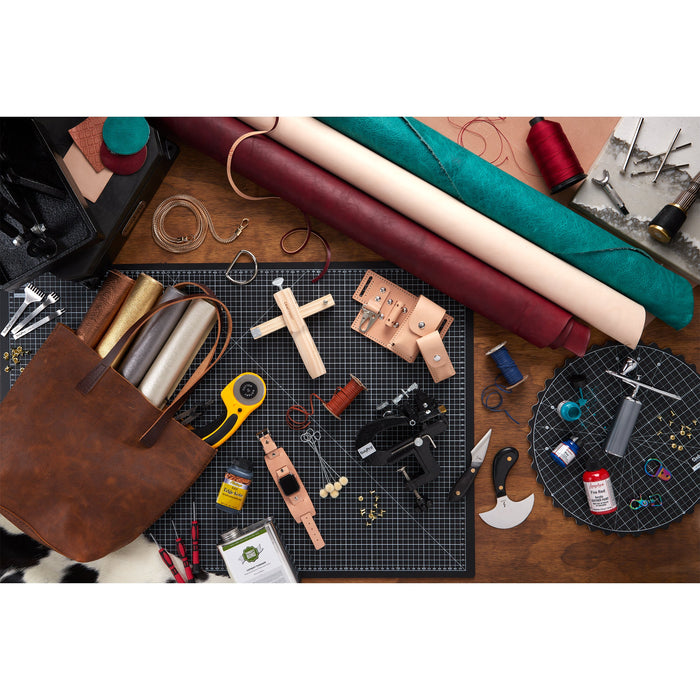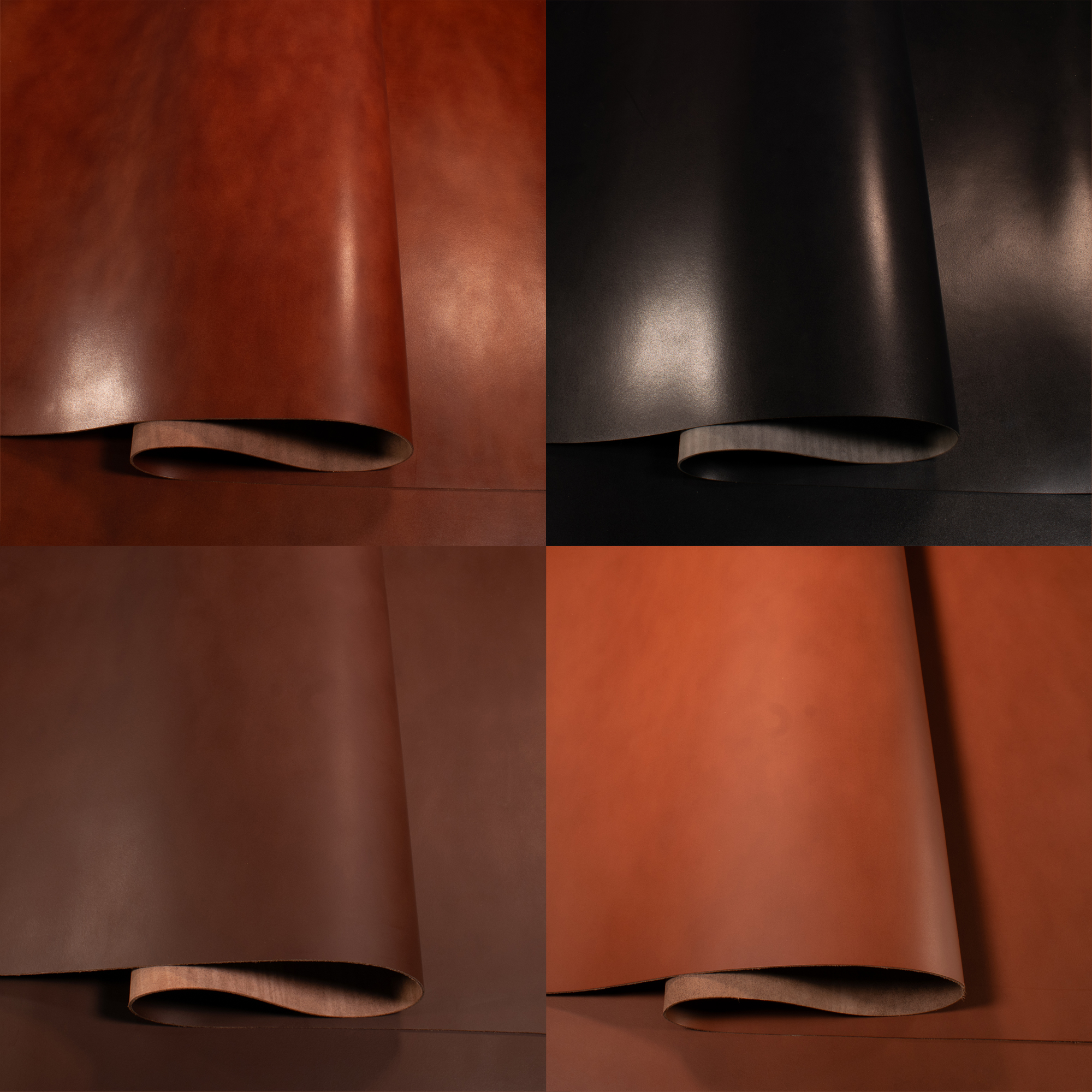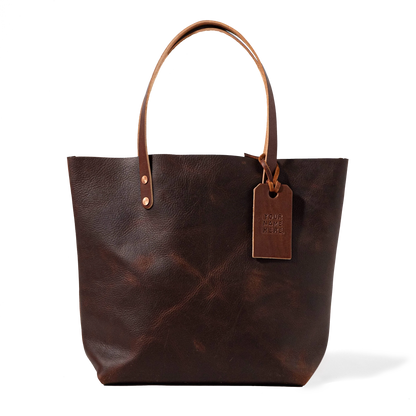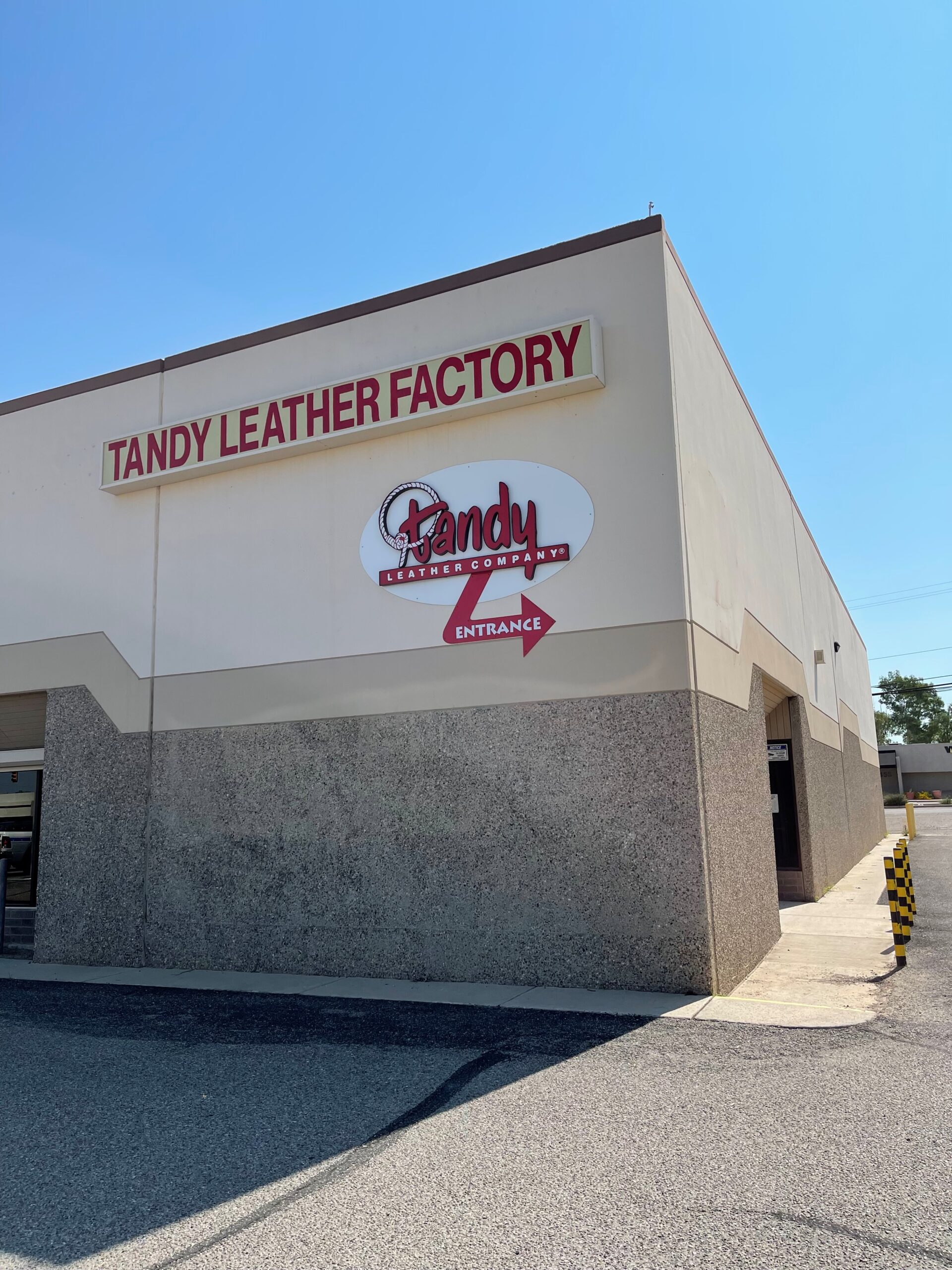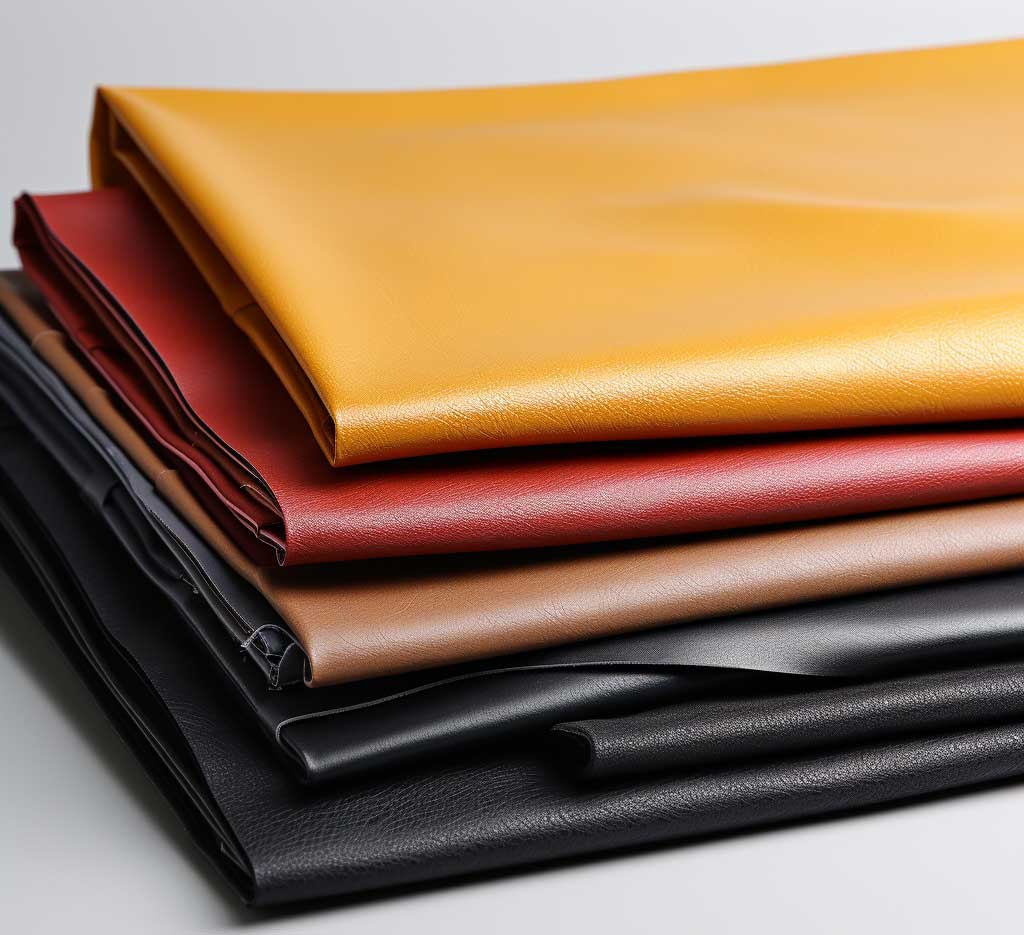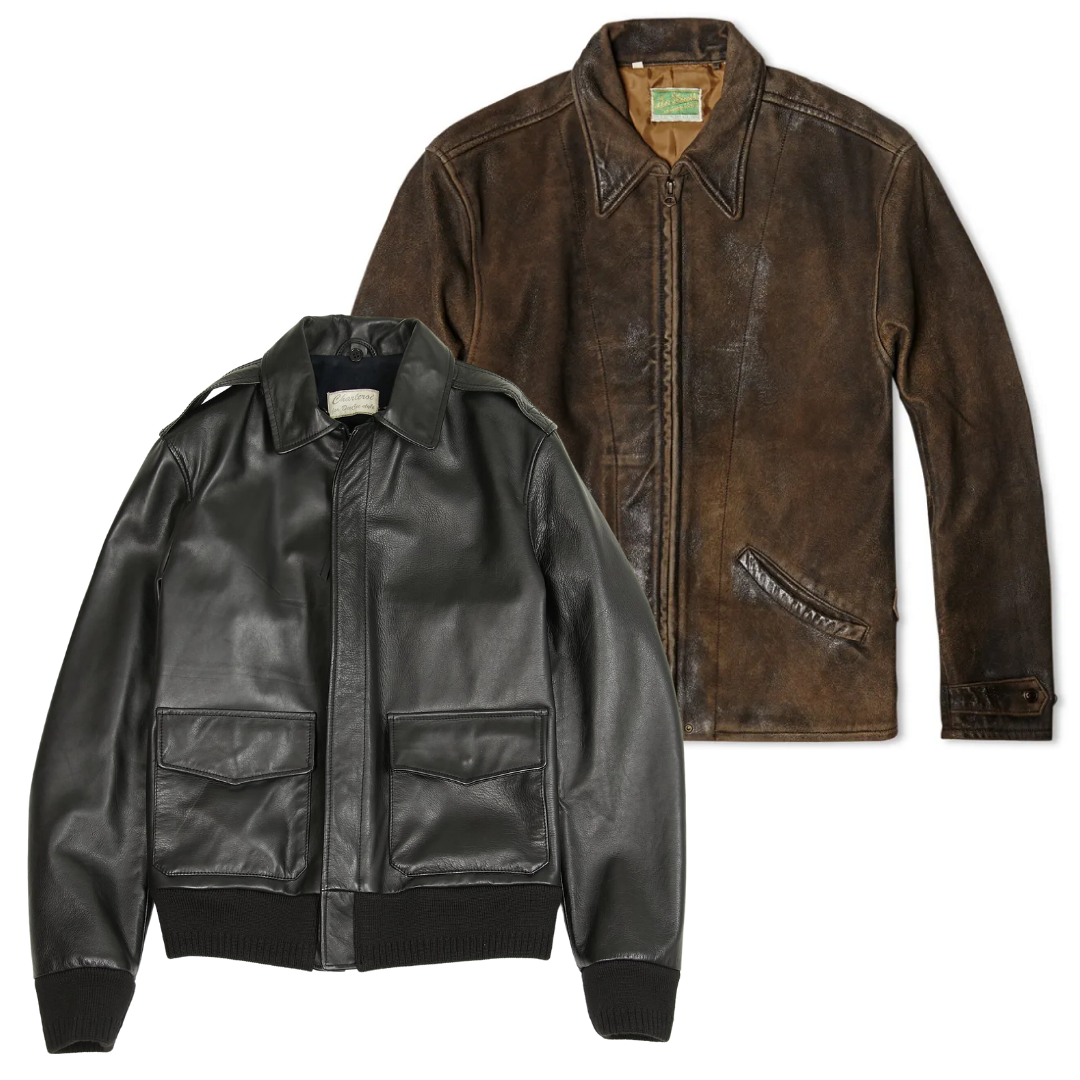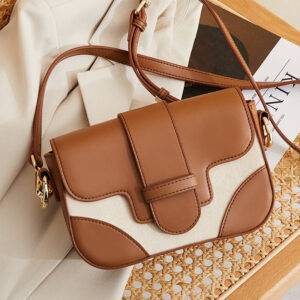
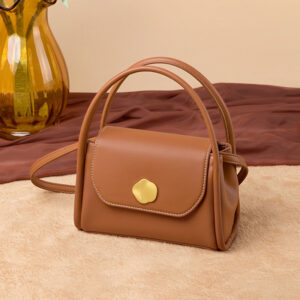
Not all Faux Leather Handbags offer the same eco-friendly credentials. I see more people choosing vegan bags because they want a lower environmental impact and easy care. Brands like Matt And Nat, vegan Birkin bags, and hobo bags made with recycled or plant-based materials catch my eye. I always look past the vegan label and check what goes into each bag. I feel empowered when I make informed choices about vegan accessories.
Key Takeaways
- Not all vegan handbags are eco-friendly. Check materials, manufacturing, and certifications to make informed choices.
- Look for plant-based materials like pineapple fibers or mushroom mycelium. These options are renewable and biodegradable.
- Recycled materials reduce waste. Brands that use old plastics or textiles help support a circular economy.
- Certifications like GRS and PETA-Approved Vegan provide trust. They show that a brand meets strict environmental and ethical standards.
- Beware of greenwashing. Brands that use vague terms without details may not be genuinely sustainable.
- Consider the entire lifecycle of a handbag. Responsible disposal through recycling or donation helps reduce environmental impact.
- Support brands that prioritize ethical labor practices. Fair wages and safe working conditions matter for true sustainability.
- Invest in quality. Durable vegan leather bags can last for years, making them a better choice for both style and the planet.
Eco-Friendly Criteria
When I look for a truly eco-friendly handbag, I focus on several key factors. I want to know what materials go into the bag, how brands manufacture it, and which certifications back up their claims. I also pay attention to whether a brand uses the term vegan responsibly or just for marketing.
Materials
Plant-Based Options
I see more brands using plant-based materials for vegan handbags. Pineapple leaf fibers and mushroom mycelium stand out as innovative choices. These materials come from renewable resources and break down more easily in nature. I find that plant-based options often feel soft and look stylish, making them a great alternative to traditional synthetics.
Recycled Content
Many vegan bags now use recycled content. Old plastic bottles, discarded textiles, and even car windshields get a second life as fashionable accessories. This approach reduces waste and supports a circular economy. I always check if a brand mentions the percentage of recycled material in their products.
Innovative Alternatives
Some brands experiment with new materials and processes. I notice handbags made from apple peels, cactus, or corn. These alternatives push the boundaries of what vegan fashion can be. They also help reduce reliance on petroleum-based synthetics.
Tip: I compare different types of faux leather using this table:
| Type of Faux Leather | Environmental Impact |
|---|---|
| Plant-based Materials | Innovations using renewable resources like pineapple leaf fibers and mushroom mycelium create eco-friendly alternatives. |
| Recycled Materials | Advanced recycling techniques reduce raw material dependency and waste generation, promoting a circular economy. |
| 合成フェイクレザー | Production processes can have significant environmental impacts, but advancements are being made towards sustainability. |
Manufacturing
Energy Use
I look for brands that use energy-efficient equipment and water-based adhesives. Low-impact dyeing and waste reduction at every stage matter to me. These steps lower the carbon footprint of vegan handbags.
Ethical Labor
Ethical manufacturing means fair wages and safe working conditions. I support brands that respect both people and the planet. I believe that a truly eco-friendly bag must come from an ethical supply chain.
- I check for:
- Use of eco-conscious materials
- Energy-efficient production
- Ethical labor practices
Certifications
Certifications help me trust a brand’s claims. I look for labels like GRS (Global Recycled Standard), PETA-Approved Vegan, and OEKO-TEX. These show that a handbag meets strict environmental and ethical standards.
| Criteria | 説明 |
|---|---|
| Environmental Credentials | Ensure the product complies with sustainability standards and uses eco-friendly coatings or recycled fibers. |
| 耐久性 | Check resistance to wear, stains, and environmental factors relevant to your application. |
| Regulatory Standards | Confirm compliance with local and international regulations, such as VOC emissions or cruelty-free certifications. |
I always remember that a vegan label alone does not guarantee a bag is eco-friendly. I dig deeper into materials, manufacturing, and certifications to make the best choice.
Greenwashing
I often see brands use the term “vegan” to attract eco-conscious shoppers. Not every vegan handbag lives up to the promise of sustainability. Greenwashing happens when companies exaggerate or mislead about their environmental efforts. I want to help you spot these tactics so you can make informed choices.
I always look for specific details about materials and production processes. If a brand only says “eco-conscious materials” without naming what those materials are, I get suspicious. I want transparency about where the materials come from and how the company handles waste. I check for certifications or detailed production stories from trusted sources. These steps help me avoid falling for empty marketing claims.
Here are some signs that a brand might be greenwashing:
- The company uses vague language like “sustainable” or “eco-friendly” without giving details.
- The website does not explain how the vegan materials are sourced or processed.
- There are no third-party certifications, such as GRS or PETA-Approved Vegan.
- The brand avoids talking about the end-of-life or recyclability of its handbags.
- The company highlights one green feature but ignores other environmental impacts.
When I shop for vegan handbags, I follow a simple process to check for greenwashing:
- I scrutinize sustainability claims on product labels. I look for clear information about the vegan materials used.
- I compare brand websites for honest disclosures. I want to see details about sourcing, manufacturing, and waste management.
- I ask questions about the bag’s material sourcing and recyclability. If a brand cannot answer, I move on to another option.
I believe that true sustainability requires more than just a vegan label. I want brands to show real commitment to the environment. I support companies that share their entire process, from sourcing vegan materials to responsible disposal. I also look for brands that talk openly about their challenges and improvements.
Tip: If you feel unsure about a brand’s claims, reach out and ask for more information. Responsible companies welcome questions and provide honest answers.
Greenwashing makes it harder for shoppers to find genuinely eco-friendly vegan handbags. I stay alert and do my research. I trust brands that offer transparency and back up their claims with certifications. By learning to spot greenwashing, I make better choices for myself and the planet.
Top Faux Leather Handbags
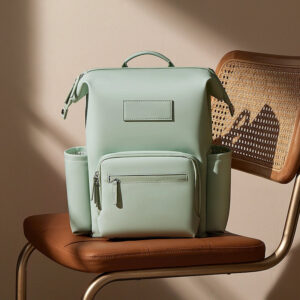
Matt And Nat
I always notice Matt And Nat when I search for faux leather handbags with strong eco credentials. This brand stands out because it uses recycled materials in almost every collection. I see vegan leather bags from Matt And Nat made with recycled nylon, cork, and rubber. The linings inside their handbags often come from recycled plastic bottles. I appreciate how Matt And Nat shares details about their manufacturing process. They focus on reducing waste and energy use. I trust their commitment to eco-friendly practices because they hold certifications like PETA-Approved Vegan. When I carry a Matt And Nat bag, I feel confident that I support a brand that values both style and sustainability.
Vegan Birkin Bag
Many people admire the classic Birkin bag for its luxury and timeless design. I look for vegan leather versions that offer the same elegance without animal products. Some brands create faux leather handbags inspired by the Birkin style using plant-based or recycled materials. These vegan leather bags often feature sturdy construction and high-quality hardware. I find that the best options use eco materials like apple leather or recycled polyurethane. I check for brands that disclose their sourcing and manufacturing details. I want to see transparency about how they make their handbags. A vegan Birkin bag gives me a way to enjoy luxury fashion while supporting eco values.
Tip: I always compare the craftsmanship and durability of vegan leather Birkin bags to traditional ones. I look for brands that offer repair services or recycling programs for their handbags.
Hobo Bags
I love hobo bags for their relaxed shape and roomy interiors. Many brands now offer faux leather handbags in this style with impressive eco credentials. The Sak Sequoia Hobo Bag catches my attention because it uses hand-crocheted polypropylene and a lining made from recycled plastic bottles. This combination shows a real commitment to eco-conscious fashion. I find that hobo bags made with recycled or plant-based materials help reduce waste and support sustainable practices. I look for brands that share information about their materials and production methods. When I choose a hobo bag with eco features, I know I am making a responsible choice for the planet.
| Brand/Style | Eco Credentials | Materials Used |
|---|---|---|
| Matt And Nat | PETA-Approved Vegan, recycled linings | Recycled nylon, cork, rubber |
| Vegan Birkin Bag | Plant-based or recycled materials, transparency | Apple leather, recycled PU |
| The Sak Sequoia Hobo | Recycled lining, hand-crocheted polypropylene | Recycled plastic bottles |
I always check for details about the materials and eco practices before I buy faux leather handbags. I believe that every choice I make can support a more sustainable future.
Best Plant-Based
I always look for plant-based vegan leather when I want a truly eco-friendly bag. These materials come from renewable sources and help reduce the use of plastics. I see more brands using innovative plant fibers to create stylish and durable handbags. When I choose plant-based vegan handbags, I know I am supporting the use of sustainable materials and helping the environment.
Some of my favorite plant-based vegan handbags include:
- In Common Vegan Tote Bag: This bag stands out for its affordable price of $35.00. I like how it uses plant-based vegan leather that feels soft and looks modern. The simple design makes it easy to carry every day. I find it perfect for school, work, or shopping trips.
- Bags made from pineapple leaf fibers: I have seen brands use Piñatex, a material made from pineapple leaves. It feels sturdy and holds up well over time. I like that it uses waste from the pineapple harvest, which means less goes to landfills.
- Mushroom-based handbags: Some brands now use mycelium, which is the root structure of mushrooms. I find these bags lightweight and flexible. They break down more easily at the end of their life, which makes them a smart choice for people who care about the planet.
- Apple leather bags: I have tried handbags made from apple peels left over from the juice industry. These bags feel smooth and look just like traditional leather. I like knowing that the material comes from food waste.
🌱 Tip: I always check if the brand shares details about their plant-based materials. Transparency helps me trust that the bag is truly eco-friendly.
I notice that plant-based vegan leather often uses fewer chemicals during production. This means less pollution and a safer product for me to use. I also find that these handbags last a long time if I take care of them. When I shop for vegan handbags, I look for brands that use sustainable materials and explain their process clearly.
Choosing plant-based vegan handbags lets me enjoy fashion while protecting the environment. I feel proud to support brands that lead the way in sustainable materials and ethical production.
Best Luxury
When I want to invest in a luxury handbag, I look for brands that combine style, craftsmanship, and sustainability. I see that more luxury designers now offer vegan leather options that rival traditional animal leather in both appearance and feel. These bags often use advanced materials and ethical production methods. I find that luxury brands pay close attention to detail, from stitching to hardware, which makes their handbags stand out.
Some luxury brands use high-quality vegan leather made from innovative sources like apple peels or cactus. These materials feel soft and durable. I notice that brands such as Stella McCartney lead the way in luxury vegan handbags. Stella McCartney uses eco-friendly materials and transparent supply chains. I also admire brands like Nanushka, which creates elegant bags with a focus on sustainability.
Here is a quick comparison of some top luxury vegan leather handbags:
| ブランド | Material Used | Eco Credentials | Standout Feature |
|---|---|---|---|
| Stella McCartney | Plant-based vegan leather | Transparent supply chain, cruelty-free | Iconic designs, high durability |
| Nanushka | Recycled vegan leather | Responsible sourcing, ethical labor | Minimalist style, soft texture |
| Senreve | Water-based polyurethane | Low-impact dyes, ethical production | Convertible designs, versatility |
💡 Tip: I always check if luxury brands offer repair services or recycling programs. This shows a real commitment to sustainability.
Luxury vegan leather handbags cost more, but I see them as long-term investments. They last for years with proper care. I feel proud carrying a bag that reflects both my style and my values.
New Brands
I enjoy discovering new brands that push the boundaries of sustainable fashion. Recently, I learned about strawberry leather, a material made from leftover strawberry plant waste. This innovative vegan leather stands out because it uses agricultural byproducts that would otherwise go to waste. I appreciate that strawberry leather is biodegradable and reduces the need for fossil fuels and toxic chemicals found in synthetic materials.
Although strawberry leather may not be as durable as some traditional options, I value its low environmental impact. I see more designers experimenting with this material to create unique and eco-friendly handbags. These new brands often share their production stories and focus on transparency. I find it exciting to support companies that use creativity to solve environmental problems.
When I shop for vegan leather handbags from emerging brands, I look for:
- Clear information about the materials used
- Honest details about durability and care
- Commitment to reducing waste and pollution
I believe that supporting new brands helps drive innovation in the fashion industry. I feel inspired when I carry a handbag made from something as unexpected as strawberry plants. These choices show that fashion can be both beautiful and responsible.
Evaluating Vegan Leather
Reading Labels
When I shop for vegan leather handbags, I always start by reading the labels carefully. I want to know exactly what materials go into the bag. Many brands use terms like “eco-friendly” or “vegan,” but these words do not always mean the product is truly sustainable. I look for clear information about the source of the materials. If a label lists plant-based or recycled content, I feel more confident in my choice. I also check for details about the manufacturing process. A conscious shopper like me wants to see transparency, not just marketing buzzwords.
I pay attention to the percentage of recycled or plant-based materials. Some brands only use a small amount, while others make their entire bag from sustainable sources. I also look for information about dyes and finishes. Water-based dyes and non-toxic finishes show a real commitment to the environment. As a conscious shopper, I know that reading labels helps me avoid products that only pretend to be sustainable.
Tip: If a label seems vague or confusing, I visit the brand’s website for more details or contact customer service with my questions.
Certifications
Certifications help me trust that a handbag meets strict environmental and ethical standards. I always look for third-party certifications when I want to make a sustainable choice. These certifications show that the brand follows best practices for both people and the planet.
Here are some of the most reliable certifications I check for:
| Certification Name | 説明 |
|---|---|
| Leather Working Group (LWG) | Focuses on sustainability and ethical practices in leather production, applicable to vegan leather. |
| Global Organic Textile Standard (GOTS) | Ensures organic status of textiles, promoting sustainable practices relevant to vegan leather. |
I also look for certifications like GRS (Global Recycled Standard), PETA-Approved Vegan, and OEKO-TEX. These labels give me peace of mind that the bag I choose supports a sustainable future. When I see these certifications, I know the brand has taken extra steps to protect the environment and ensure ethical labor.
Red Flags
I have learned to spot red flags that signal a handbag may not be as sustainable as it claims. If a brand uses only vague language like “eco” or “green” without details, I get suspicious. I also watch out for products that do not list the exact materials or avoid talking about their supply chain. A lack of third-party certifications is another warning sign for me.
Some other red flags I notice include:
- No mention of recycled or plant-based content
- No information about ethical labor or fair wages
- Overuse of plastic-based materials without any recycling plan
When I see these signs, I question whether the brand is truly conscious about its impact. I want to support companies that care about both people and the planet. By staying alert for red flags, I make sure my choices reflect my values as a sustainable and conscious shopper.
耐久性
When I choose a vegan leather handbag, I always think about how long it will last. Durability matters to me because I want my bag to handle daily use. I have noticed that real leather often has a reputation for lasting many years. During some tests, real leather showed almost no scuff marks or stitching problems. Vegan leather, on the other hand, sometimes showed small frays and surface scratches after just a few days.
Real leather demonstrated its reputation for resilience during testing, showing minimal scuff marks and no stitching failures, while the vegan tote showed micro-fraying and slight surface abrasion by Day 5.
Even so, I see that vegan leather bags have improved a lot in recent years. Many now last for several seasons if I take good care of them. This works well for me, especially when I like to change my accessories often.
Vegan leather bags have made technological leaps—many now last several seasons if handled with care, which could be adequate for those who refresh accessories often.
I always check the thickness and quality of the vegan leather before I buy. Thicker materials usually last longer. I also look at the stitching and hardware. Strong seams and sturdy zippers help the bag stay in good shape. I know that with the right care, a vegan leather bag can be a reliable choice for everyday use.
Care
I want my vegan leather handbag to look its best for as long as possible. I follow a few simple steps to keep it clean and in good condition:
- Store your bag in a cool, dry place, away from direct sunlight and heaters to prevent cracking or fading.
- Use a dust bag or breathable cover when not in use to protect against dust and scratches.
- Pad out any creases with tissue paper if folding the bag to maintain its shape and prevent deep lines.
- Regular cleaning and smart storage will help your PU leather bag last longer and look better.
I wipe my bag with a damp cloth to remove dirt. I avoid harsh chemicals because they can damage the surface. If my bag gets wet, I dry it gently with a soft towel. I never use a hair dryer or put it near a heater. I find that these habits help my vegan leather bag stay soft and bright.
Tip: I always check the care instructions from the brand. Some vegan leathers need special products or cleaning methods.
Disposal
When my vegan leather handbag reaches the end of its life, I think about how to dispose of it responsibly. I try to avoid sending it straight to the landfill. Some brands offer recycling programs or take-back schemes. I look for these options before I throw anything away.
If my bag is still in good shape, I donate it to a local charity or sell it online. This gives the bag a second life and reduces waste. For bags that are too worn out, I check if the materials can be recycled. Some cities have textile recycling centers that accept synthetic and plant-based leathers.
I believe that making thoughtful choices at the end of a bag’s life is just as important as choosing it in the first place. By donating, recycling, or repurposing my old handbags, I help reduce the impact on the environment.
Sustainable Fashion
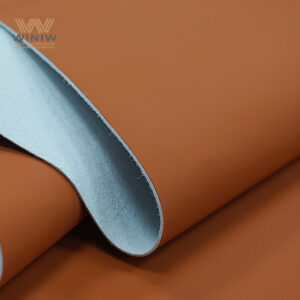
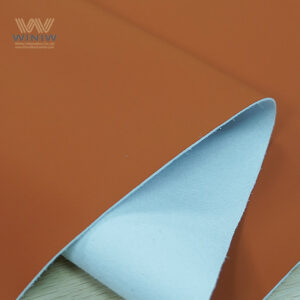
Vegan vs. Animal Leather
When I choose a handbag, I always think about the impact on the planet. I want my accessories to be cruelty-free and stylish. Many people ask me if vegan leather is better for the environment than animal leather. I have learned that the answer depends on the type of vegan leather and how it is made.
Vegan leather, often made from synthetic materials like polyurethane (PU) or polyvinyl chloride (PVC), is derived from fossil fuels, contributes to pollution, and is not biodegradable. In contrast, animal leather is a byproduct of livestock farming, which, if not used, would lead to waste. The tanning process for leather can be managed sustainably, and when sourced responsibly, it can utilize fewer resources than synthetic alternatives. Plant-based vegan leathers, made from renewable resources, offer a more sustainable option, requiring less water and energy to produce, and are biodegradable, thus presenting a lower environmental impact overall.
I always look for plant-based vegan leathers because they are both cruelty-free and environmentally friendly. These materials use less water and energy and break down naturally. I feel good knowing my choice supports a cleaner planet and avoids animal harm.
Supporting Brands
I believe that supporting brands with strong values makes a real difference. When I buy from companies that focus on cruelty-free and sustainable practices, I help shape the future of fashion. I look for brands that use organic cotton, recycled materials, and fair labor.
- Sustainable and Eco-Friendly Materials: Organic cotton is grown without harmful pesticides, supporting sustainable farming practices.
- Biodegradable Fabrics: Unlike synthetic materials, organic cotton decomposes naturally, reducing landfill waste.
- Reduced Carbon Footprint: Organic farming methods lower greenhouse gas emissions compared to conventional cotton production.
- Supporting Ethical and Fair Trade Practices: Many organic cotton farms follow ethical standards, ensuring fair wages and safe working conditions for farmers.
I always check if a brand is transparent about its supply chain. I want to see real action, not just promises. When I support cruelty-free brands, I know my money goes toward better working conditions and less pollution. I also feel proud to carry a bag that matches my values.
Circular Fashion
I see circular fashion as the future of cruelty-free handbags. This approach focuses on reusing and recycling materials at every stage. Circular fashion enhances the sustainability of faux leather handbags by advocating for the use of alternative materials and minimizing waste through innovative production techniques. This method is in line with the circular economy principles, which focus on the entire lifecycle of products, emphasizing the significance of reusing and recycling materials.
I always look for brands that offer take-back programs or use recycled content. I want my cruelty-free bag to have a second life when I am done with it. By choosing circular fashion, I help reduce waste and support a system that values resources. I believe that every small step, like recycling or buying secondhand, brings us closer to a more sustainable and cruelty-free world.
Responsible Disposal
I always think about what happens to my handbags when I no longer use them. Responsible disposal matters as much as choosing eco-friendly materials. I want to make sure my choices do not add to landfill waste or pollution.
When my vegan leather bag reaches the end of its life, I look for ways to extend its usefulness. I often start by donating bags that still look good. Local charities, shelters, or thrift stores welcome gently used handbags. I feel good knowing someone else can enjoy my bag and keep it out of the trash.
If my bag has too much wear for donation, I consider recycling. Some cities have textile recycling programs that accept synthetic and plant-based leathers. I check with my local recycling center to see if they take these materials. I also look for brands that offer take-back or recycling programs. Some companies collect old bags and turn them into new products. This supports a circular fashion system and reduces waste.
♻️ Tip: I always check the brand’s website for information about recycling or take-back options before I buy a new bag.
Sometimes, I get creative and upcycle my old handbags. I have turned worn-out bags into storage containers, plant holders, or even small wallets. Upcycling gives new life to materials that might otherwise end up in a landfill. I enjoy the process and feel proud of reducing waste in my own way.
Here is a simple guide I follow for responsible disposal:
- Assess the condition: If the bag is still usable, I donate or sell it.
- Check for recycling: I contact local recycling centers or look for brand take-back programs.
- Upcycle creatively: I repurpose parts of the bag for other uses at home.
- Dispose as a last resort: If no other options exist, I dispose of the bag responsibly, following local waste guidelines.
| Disposal Method | Environmental Impact | My Experience |
|---|---|---|
| Donation | Reduces waste, helps others | Easy and rewarding |
| Recycling | Supports circular economy | Requires research |
| Upcycling | Minimizes landfill waste | Fun and creative |
| Landfill | Last resort, not preferred | I avoid when possible |
I believe every step counts. By thinking about disposal before I buy, I support a more sustainable fashion industry. I encourage everyone to ask brands about end-of-life options and to share creative ideas for reusing old bags. Together, we can make a real difference for the planet.
I know that choosing truly eco-friendly faux leather handbags means looking at materials, manufacturing, and brand transparency. I use these criteria to find bags that fit my values and lifestyle.
- Faux leather bags are affordable, easy to maintain, and lightweight for daily use.
- Many brands now use eco-conscious coatings and focus on ethical fashion.
- I see more people seeking personalized, responsibly sourced, and exclusive options from brands that show real commitment to sustainability.
I invite you to share your favorite sustainable brands or tips in the comments. Let’s keep exploring eco-friendly fashion together!
よくあるご質問
What makes a faux leather handbag eco-friendly?
I look for plant-based or recycled materials, ethical manufacturing, and clear certifications. Brands that share details about their process and avoid greenwashing stand out to me.
How can I tell if a vegan handbag is truly sustainable?
I check for third-party certifications, like GRS or PETA-Approved Vegan. I also read about the materials and look for transparency on the brand’s website.
Are plant-based vegan leathers durable?
I find that many plant-based leathers, like those made from pineapple or mushroom, last for years with proper care. They often resist wear and tear as well as synthetic options.
Can I recycle my old faux leather handbag?
Some brands offer recycling or take-back programs. If not, I look for local textile recycling centers. Donating or upcycling also helps keep bags out of landfills.
Do faux leather bags need special care?
I wipe my bag with a damp cloth and store it away from sunlight. I avoid harsh chemicals. Some brands provide specific care instructions, so I always check those first.
Is vegan leather better for the environment than animal leather?
Plant-based vegan leathers usually have a lower environmental impact than animal leather. Synthetic vegan leathers can still harm the environment, so I choose plant-based or recycled options when possible.


